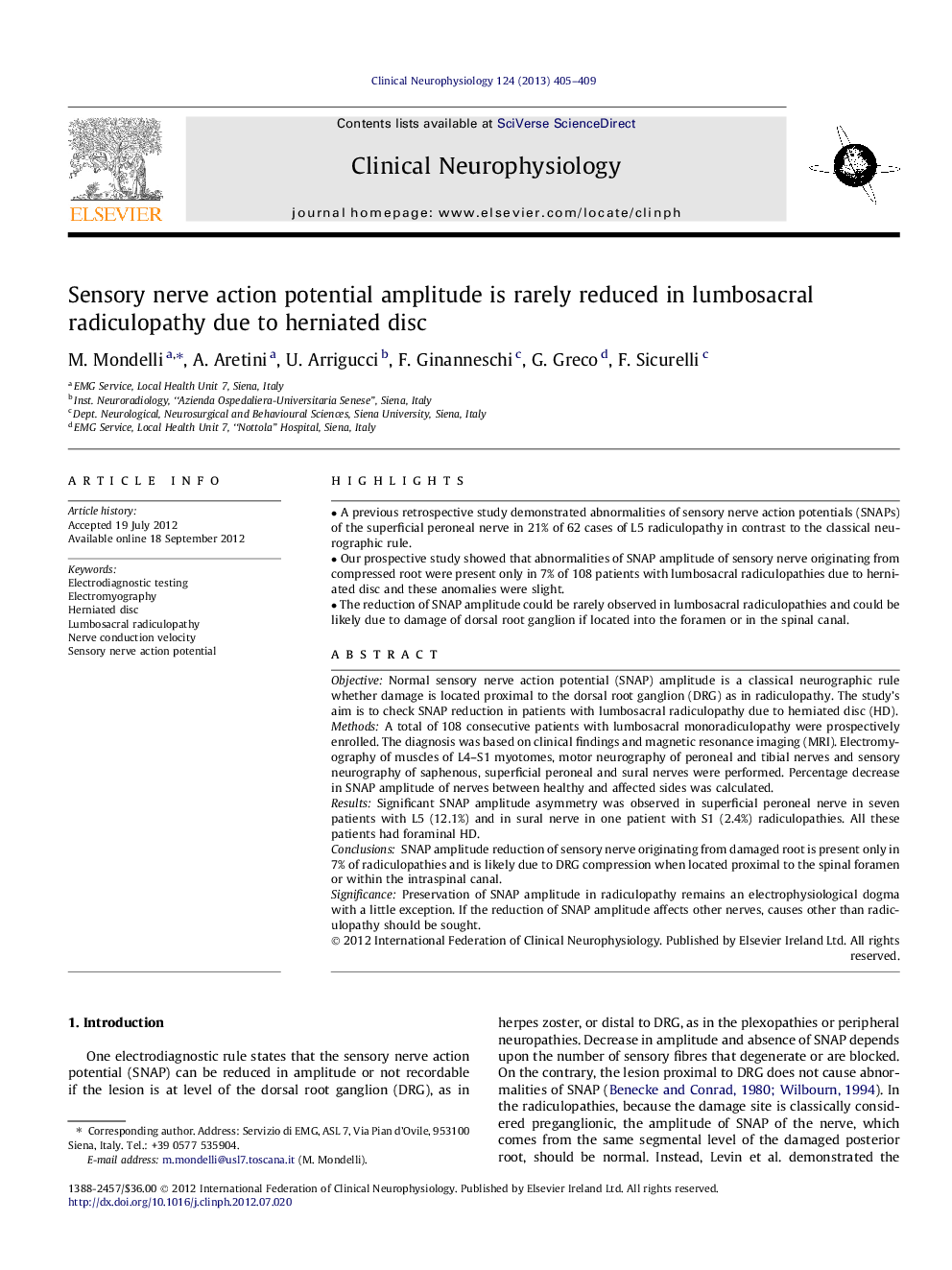| Article ID | Journal | Published Year | Pages | File Type |
|---|---|---|---|---|
| 3044622 | Clinical Neurophysiology | 2013 | 5 Pages |
ObjectiveNormal sensory nerve action potential (SNAP) amplitude is a classical neurographic rule whether damage is located proximal to the dorsal root ganglion (DRG) as in radiculopathy. The study’s aim is to check SNAP reduction in patients with lumbosacral radiculopathy due to herniated disc (HD).MethodsA total of 108 consecutive patients with lumbosacral monoradiculopathy were prospectively enrolled. The diagnosis was based on clinical findings and magnetic resonance imaging (MRI). Electromyography of muscles of L4–S1 myotomes, motor neurography of peroneal and tibial nerves and sensory neurography of saphenous, superficial peroneal and sural nerves were performed. Percentage decrease in SNAP amplitude of nerves between healthy and affected sides was calculated.ResultsSignificant SNAP amplitude asymmetry was observed in superficial peroneal nerve in seven patients with L5 (12.1%) and in sural nerve in one patient with S1 (2.4%) radiculopathies. All these patients had foraminal HD.ConclusionsSNAP amplitude reduction of sensory nerve originating from damaged root is present only in 7% of radiculopathies and is likely due to DRG compression when located proximal to the spinal foramen or within the intraspinal canal.SignificancePreservation of SNAP amplitude in radiculopathy remains an electrophysiological dogma with a little exception. If the reduction of SNAP amplitude affects other nerves, causes other than radiculopathy should be sought.
► A previous retrospective study demonstrated abnormalities of sensory nerve action potentials (SNAPs) of the superficial peroneal nerve in 21% of 62 cases of L5 radiculopathy in contrast to the classical neurographic rule. ► Our prospective study showed that abnormalities of SNAP amplitude of sensory nerve originating from compressed root were present only in 7% of 108 patients with lumbosacral radiculopathies due to herniated disc and these anomalies were slight. ► The reduction of SNAP amplitude could be rarely observed in lumbosacral radiculopathies and could be likely due to damage of dorsal root ganglion if located into the foramen or in the spinal canal.
